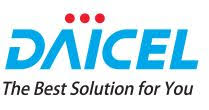
Columns packed with the immobilized protein stationary phases (PSPs) are successfully utilized by scientists for separation and characterization of chiral compounds in a great number of applications, ranging from drug discovery and quality assurance of marketed drugs to environmental monitoring.
The chiral selector for the CHIRALPAK® AGP is a1-acid glycoprotein (AGP), while human serum albumin (HSA) is the chiral selector for CHIRALPAK HSA. The chiral selector for CHIRALPAK CBH is cellobiohydrolase, a stable enzyme. The three chiral selectors are immobilized on 5-µm spherical silica particles. The PSPs function entirely in the reversed-phase chromatographic mode, using buffers with low organic modifier content and at moderate pH values. Enantioselectivity can easily be controlled or improved by changes in the mobile phase composition: pH, buffer and organic modifier types and concentrations.
All PSP selectors are packed in columns with 3, 4 and 10mm internal diameter to cover separations on both analytical and semi-preparative scales.
PSP Enantioselectivity
Enantioselectivity can easily be controlled or improved by changes in the mobile phase composition: pH, buffer and organic modifier types and concentrations. The mobile phases, with which these columns are used, are compatible with MS and MS/MS analyses. However, the previously established guidelines on method development for the PSP columns involved the extensive use of phosphate buffers, which required a lengthy optimization process of identifying a buffer system better suited for the MS analysis. A poster on LC-MS Compatible Reversed-Phase Screening Strategies on Daicel Protein-Based Columns, presented at the Chirality 2010 meeting by T. Zhang, et al., describes approaches to simplify screening and optimization methodology for separation of diverse chiral compounds on CHIRALPAK PSPs.
The approaches to rational and simplified method development were described in detail in the paper New approaches of LC-MS compatible method development on a1-acid glycoprotein-based stationary phase for resolution of enantiomers by HPLC, published by T. Michishita, et al., in the Wiley Journal of Separation Science (J. Sep. Sci. 2010, 33, 3627-3637). One of the goals of this research work was to achieve a high success rate for separating diverse chiral compounds by applying a newly devised method development strategy, which is simple, general and LC-MS compatible. A total of 76 compounds were used for the evaluation of CHIRALPAK AGP. The effect of chromatographic parameters, such as pH, the organic modifier, and buffer types, on enantiomer resolution was carefully considered. The screening methodology, described in the paper, was tested on these 76 chiral compounds. The identified success rate of the enantiorecognition by CHIRALPAK AGP was over 92%.
Generic Drug Analysis
Drug Monitoring in Wastewater
Another example of the use of the PSPs, the CHIRALPAK CBH, was presented by B. Kasprzyk-Hordern, et al. in the paper Enantiomeric Analysis of drugs of abuse in wastewater by chiral liquid chromatography coupled with tandem mass spectrometry, published in J. Chromatogr. A. 1217 (2010) 4575-4586. The authors discussed the importance of enantiomeric analyses of chiral illicit drugs in both the environmental and forensic fields


























